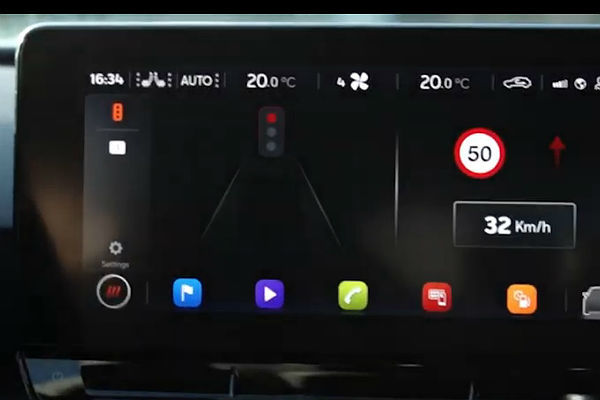A Seat project, in collaboration with the DGT, the Barcelona City Council and ETRA has managed to connect cars with traffic lights and the traffic control center to anticipate the color of its light. This project also allows information on road incidents to reach the vehicle directly without the need for information panels. The car and infrastructure, linked through the cloud using cellular technology and with latency times of 300 microseconds.
A part of the project consists of communicating traffic lights with cars. " The traffic light sends a signal to the DGT in the cloud about its current state and when it will change and the car receives this information, interprets it and alerts you with the speed at which you are going how you are going to find it. way, if it is going to turn red it warns you and you can start braking before arriving, "says Jordi Caus , head of mobility concepts at Seat.
When a vehicle approaches the traffic light, it receives on its screen a warning of whether it will be red, green or yellow, when it reaches its height. To do this, the system calculates the distance at which the car is and the speed it takes. And a very important point for safety: it only works if the vehicle is traveling at the allowed speed . Otherwise, stop informing the driver. "If the speed limits are exceeded the system is blocked. This is very important for road safety. The objective is to be an auxiliary tool to allow the driver to carry a more uniform movement ," says Manuel Valdés , Mobility and Infrastructure Manager of the Barcelona City Council.
Currently, there are 2,000 information panels on Spanish roads that indicate the state of traffic, weather or incidents due to works and accidents . With this system, that information will appear directly on the screens of vehicles connected at any point of the road network. "The same as before we did with variable message panels on the road we can now do it but at any point on the road, directly to the car ", according to Jorge Ordás, deputy director of Mobility and Technology of the DGT.
The vehicle used in this pilot test incorporates the technology necessary to connect with the environment and collect the information that the DGT uploads to the cloud. Thanks to this, your driver can know in real time what you will find on your way. "The project is that the new SEAT connected car models collect from the central cloud of the DGT all real-time information related to traffic, whether on roads in information panels or in cities with traffic light status," he says. Caus
More information, less risk situations. This is the objective of the project, which places road safety as the main point, together with greater driving efficiency. " We are looking for a great impact in accident reduction , in traffic reduction and therefore, a positive impact on the environment," comments Jorge Ordás.
In addition, the connected cars and users themselves will also become information transmitters. " Anyone who is aware of something that happens on the road can share it , so that the rest of the users can know when they reach a point what is happening," says the Deputy Director of Mobility and Technology of the DGT. Also, it is a first step for the future autonomous vehicle . "With this project we are taking a first step to connect cars with the general traffic infrastructure. We have started with informative functions but, thinking about the future, we will be able to act directly on the car in risk situations, " concludes Caus.
According to the criteria of The Trust Project
Know more- Engine
- Electric cars
- DGT
- Seat
NovedadSeat starts its electric deployment with the little Mii
At the wheel of the Seat Mii Electric, the brand's first zero emissions
Angela Merkel opens the first Volkswagen power plant in Germany

